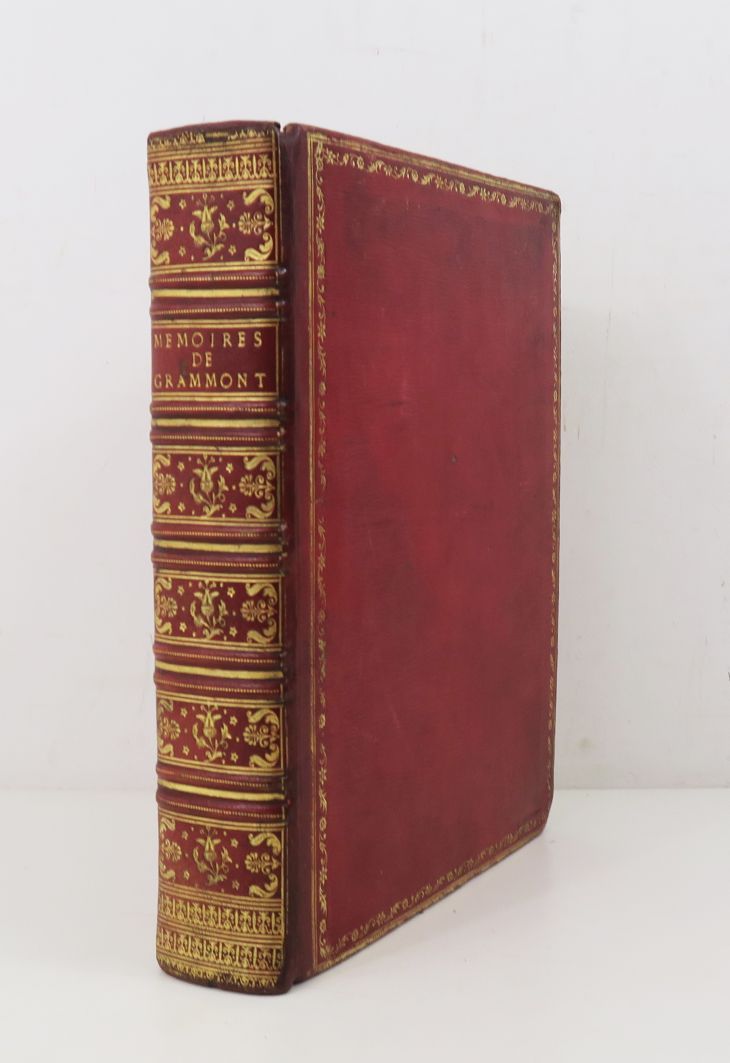Description
HAMILTON (Antoine). Memoirs of the Count of Grammont. London, Edwards, sd [1793]. In-4, red long-grained morocco, richly decorated spine, large gilt border on the sides, gilt roulette on the edges and inside, gilt edges (period binding). Particularly sought-after edition for its magnificent engraved portraits and explanatory notes. 78 hors-texte plates including a frontispiece, a view and 76 portraits drawn by S. Harding and F. Voet. The Memoirs of Philibert de Gramont (1621-1707) are among the most sulphurous of the 18th century. Written by Antoine Hamilton (1646-1720), his Scottish-born brother-in-law, they provide an account of life and customs at the court of King Charles II, where the Count was in exile. Published for the first time in Holland in 1713 (with the fictitious mention of Cologne), six years after Gramont's death, they were immediately very successful and were reprinted in multiple editions throughout the following centuries. It is said that Fontenelle, who was then censor of the press, refused to let such a work appear, but finally gave in on Gramont's own intervention (Cohen 472; Brunet III, 30.) A superb copy in contemporary morocco, with very light scattered foxing on rare leaves.
1684
HAMILTON (Antoine). Memoirs of the Count of Grammont. London, Edwards, sd [1793]. In-4, red long-grained morocco, richly decorated spine, large gilt border on the sides, gilt roulette on the edges and inside, gilt edges (period binding). Particularly sought-after edition for its magnificent engraved portraits and explanatory notes. 78 hors-texte plates including a frontispiece, a view and 76 portraits drawn by S. Harding and F. Voet. The Memoirs of Philibert de Gramont (1621-1707) are among the most sulphurous of the 18th century. Written by Antoine Hamilton (1646-1720), his Scottish-born brother-in-law, they provide an account of life and customs at the court of King Charles II, where the Count was in exile. Published for the first time in Holland in 1713 (with the fictitious mention of Cologne), six years after Gramont's death, they were immediately very successful and were reprinted in multiple editions throughout the following centuries. It is said that Fontenelle, who was then censor of the press, refused to let such a work appear, but finally gave in on Gramont's own intervention (Cohen 472; Brunet III, 30.) A superb copy in contemporary morocco, with very light scattered foxing on rare leaves.
